| Columns Retired Columns & Blogs |
Musical Fidelity Nu-Vista 800 integrated amplifier Measurements
Sidebar 3: Measurements
Footnote 1: When I began testing Michael Fremer's review sample of the Nu-Vista 800 (serial no. 00119), I broke it by inadvertently short-circuiting the speaker outputs at high power: As fate would have it, the output-stage devices sacrificed themselves to save the power-supply rail fuses. The measurements were therefore performed on a different sample (serial no. 00117).—John Atkinson
I performed a full set of measurements on the Musical Fidelity Nu-Vista 800 (footnote 1) using my Audio Precision SYS2722 system (see the January 2008 "As We See It"). As the amplifier is specified as having a maximum power output of 330Wpc into 8 ohms, I preconditioned it before the measurements by running it at one-third that power into 8 ohms for an hour. Following that period, the top panel was warm, at 99.5°F (37.5°C), and the heatsinks hotter, at 121.9°F (49.9°C).
With the Nu-Vista 800's volume control set to "114.5," its maximum voltage gain at 1kHz into 8 ohms was typical for an integrated amplifier, at 42.1dB unbalanced and 42.3dB balanced. The volume control operated in accurate 0.5dB steps, with the error a negligible +0.13dB at a setting of "79.5"; ie, –35dB was actually –34.87dB. The Nu-Vista 800 preserved absolute polarity for both balanced and unbalanced inputs, its XLRs being wired with pin 2 hot. The unbalanced input impedance was 42k ohms at 20Hz and 1kHz, dropping to 17.5k ohms at 20kHz. The balanced input impedance was 18k ohms across the audioband.
The output impedance, including 6' of speaker cable, was low in the bass and midrange, at 0.095 ohm, rising to 0.15 ohm at the top of the audioband. Consequently, the modulation of the Nu-Vista 800's frequency response due to the Ohm's law interaction between this impedance and the impedance of our standard simulated loudspeaker was also very low (fig.1, gray trace). The amplifier's response into resistive loads was flat in the audioband, with its output into 8 ohms down by 0.5dB at 20kHz and by 3dB at 70kHz (blue and red traces). This graph was taken with the volume control set to its maximum. Commendably, both the very close channel balance and the overall response were preserved at lower settings of this control. The Nu-Vista 800 performed well with a 10kHz squarewave (fig.2), with no overshoot or ringing.
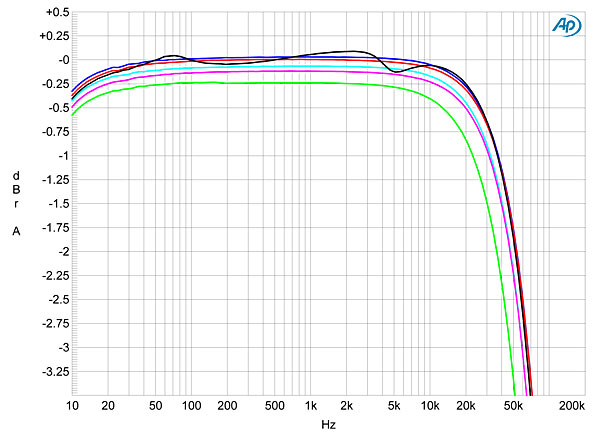
Fig.1 Musical Fidelity Nu-Vista 800, balanced frequency response at 2.83V into: simulated loudspeaker load (gray), 8 ohms (left channel blue, right red), 4 ohms (left cyan, right magenta), 2 ohms (green) (0.5dB/vertical div.).
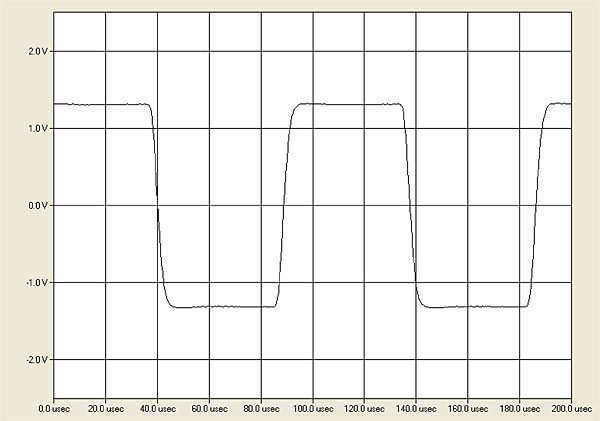
Fig.2 Musical Fidelity Nu-Vista 800, small-signal, 10kHz squarewave into 8 ohms.
Channel separation was superb below 1kHz, at >100dB, and still 72B at 20kHz. The wideband, unweighted signal/noise ratio, taken with an unbalanced input shorted but the volume control set to its maximum, was a little disappointing at 57.2dB left and 52.6dB right, both figures ref. 2.83V into 8 ohms. These figures improved by almost 12dB when the measurement bandwidth was restricted to the audioband, and were also sensitive to the arrangement of the ground connection between the amplifier and the Audio Precision analyzer. Fig.3 reveals that the random components of the noise floor are higher in level than is usually found in integrated amplifiers, and that some odd harmonics of the AC supply frequency are present, perhaps due to magnetic interference from the two large toroidal power transformers.
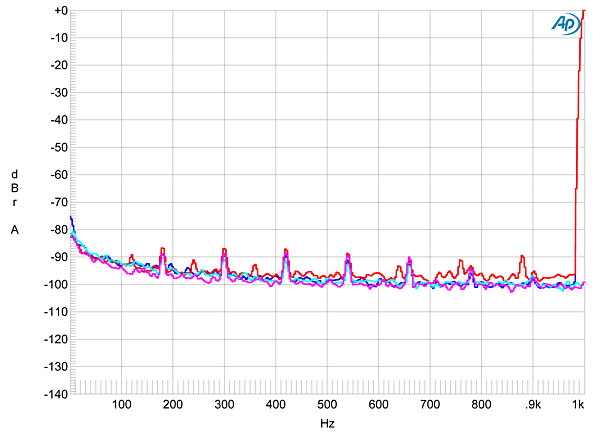
Fig.3 Musical Fidelity Nu-Vista 800, spectrum of 1kHz sinewave, DC–1kHz, at 1Wpc into 8 ohms (left channel blue, right red), and with input shorted (left cyan, right magenta) (linear frequency scale).
With this higher-than-usual level of noise, the actual distortion in the THD+noise traces (figs. 4 and 5) doesn't rise above the noise until just below the actual onset of clipping. With continuous drive, the Nu-Vista 800 just failed to meet its specified output power of 330W into 8 ohms (25.2dBW) with both channels driven at our usual definition of clipping: when the THD+N reaches 1%. Fig.4 indicates that the amplifier clips at 310Wpc into 8 ohms, a slight shortfall of 0.3dB, though it's fair to note that I don't hold the wall voltage constant in my testing. The supply voltage was 122V AC with the amplifier quiescent, but dropped to 119.1V AC when it was clipping into 8 ohms. Into 4 ohms with both channels driven, the Nu-Vista 800 clipped at 500Wpc (24dBW, fig.5). I didn't test its clipping power into 2 ohms, as Musical Fidelity's Antony Michaelson had warned me that although they test power and stability, etc., into 2 ohms, I shouldn't expect to operate the amplifier for a prolonged period at full power into 2 ohms.
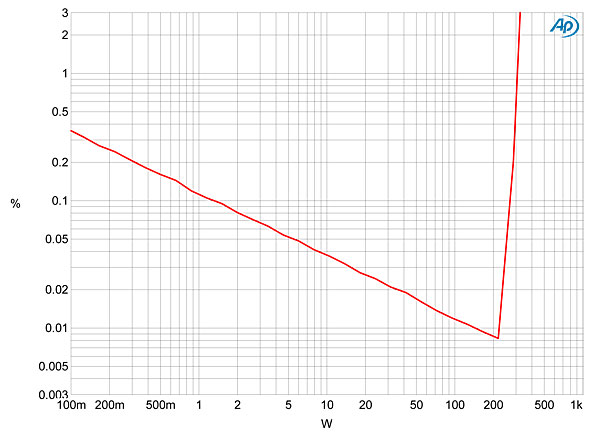
Fig.4 Musical Fidelity Nu-Vista 800, distortion (%) vs 1kHz continuous output power into 8 ohms.
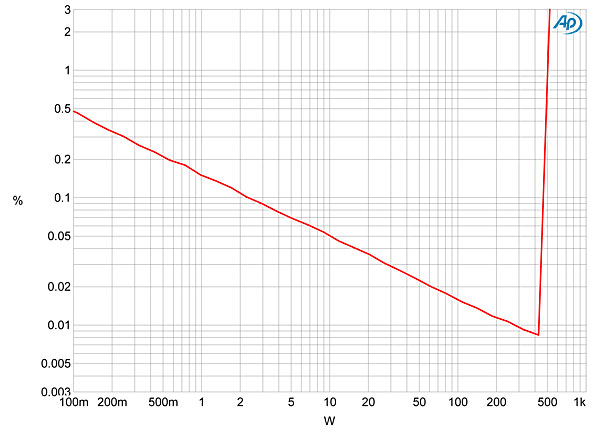
Fig.5 Musical Fidelity Nu-Vista 800, distortion (%) vs 1kHz continuous output power into 4 ohms.
I tested how the percentage of THD+N changed with frequency at a level at which I hoped to be able to see the contribution of distortion instead of just noise: 20V (equivalent to 50W into 8 ohms, 100W into 4 ohms, and 200W into 2 ohms). Even so, fig.6 suggests that the THD lies beneath the noise floor below 5kHz or so into higher impedances. Though the distortion into 4 and 8 ohms is very low overall, it does rise into 2 ohms, averaging 0.01% below 1kHz and reaching 0.1% above 10kHz. Just as I finished the 2-ohm measurement, the amplifier lived up to Michaelson's warning and muted its output. I had to wait until it had cooled down before I could continue the testing.
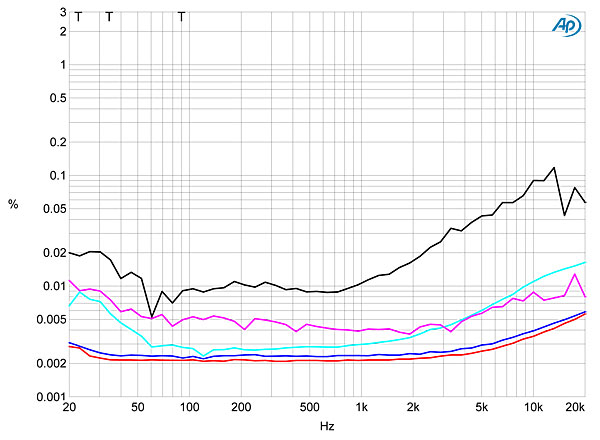
Fig.6 Musical Fidelity Nu-Vista 800, THD+N (%) vs frequency at 20V into: 8 ohms (left channel blue, right red), 4 ohms (left cyan, right magenta), 2 ohms (gray).
The THD+N waveform (fig.7) was dominated by random noise. However, spectral analysis indicated that the distortion signature was primarily the subjectively innocuous second harmonic in the left channel (fig.8, blue trace), but with an equal amount of third harmonic in the right channel (red). But with each harmonic at –100dB (0.001%) despite the high power level, these should not cause concern for listening to music, especially as intermodulation distortion is also extremely low (fig.9).
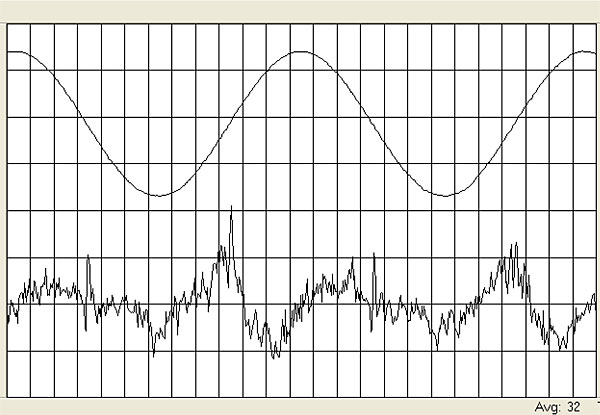
Fig.7 Musical Fidelity Nu-Vista 800, 1kHz waveform at 50W into 8 ohms, 0.016% THD+N (top); distortion and noise waveform with fundamental notched out (bottom, not to scale).
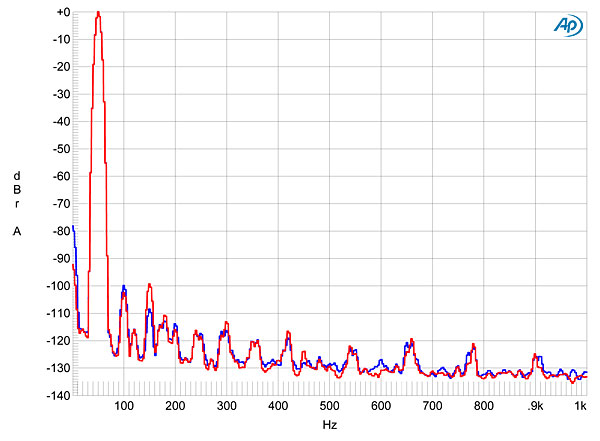
Fig.8 Musical Fidelity Nu-Vista 800, spectrum of 50Hz sinewave, DC–1kHz, at 100Wpc into 8 ohms (left channel blue, right red, linear frequency scale).
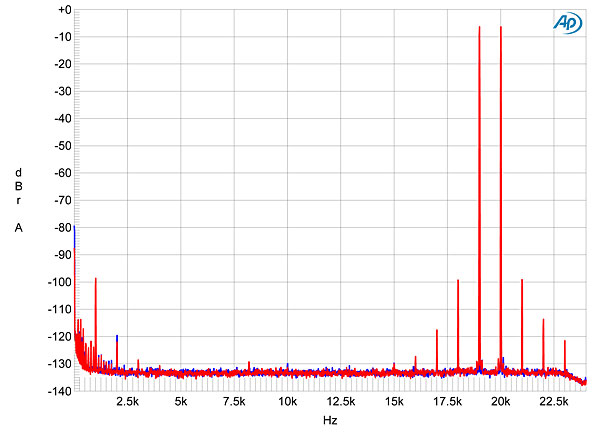
Fig.9 Musical Fidelity Nu-Vista 800, HF intermodulation spectrum, DC–24kHz, 19+20kHz at 100Wpc peak into 8 ohms (left channel blue, right red, linear frequency scale).
I feared for my back when I lifted the 86-lb Musical Fidelity Nu-Vista 800 onto my test bench. But when it comes to the measured performance of this handsomely styled integrated amplifier, there is nothing at all to worry about.—John Atkinson
Footnote 1: When I began testing Michael Fremer's review sample of the Nu-Vista 800 (serial no. 00119), I broke it by inadvertently short-circuiting the speaker outputs at high power: As fate would have it, the output-stage devices sacrificed themselves to save the power-supply rail fuses. The measurements were therefore performed on a different sample (serial no. 00117).—John Atkinson
- Log in or register to post comments




































